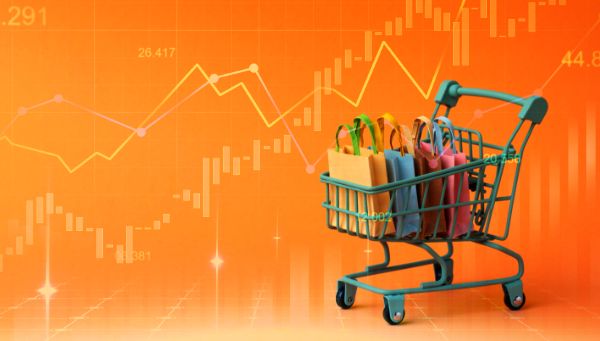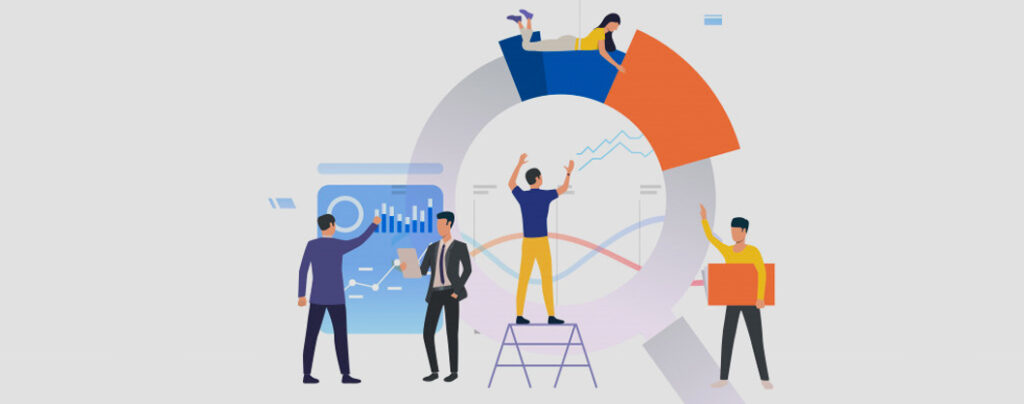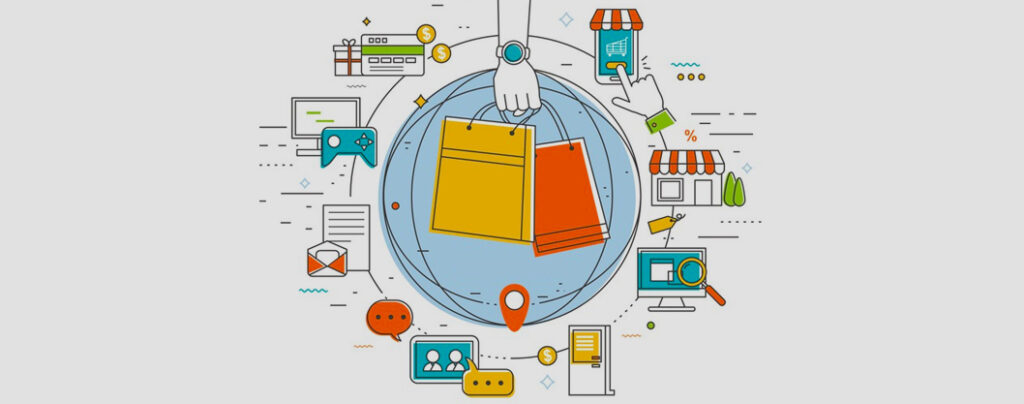Accelerate Your eCommerce Sales with Big Data and AI for 2021

Holiday season is the most exciting time of the year for businesses. It has always driven some of the highest sales of the year. In 2019, online holiday sales in the US alone touched $135.35 billion and the average order value hit $152.95. After an unprecedented 2020, retailers are performing many bold maneuvers for turning the tide around in the new year.
A successful holiday strategy in 2021 requires much more than just an online presence. To compete during one of the strangest seasons post a strangest year yet, brands are trying to create more meaningful connections with consumers, offering hyper-personalized online experiences, and ensuring that holiday shoppers experience nothing short of pure convenience and peace of mind.
In 2020, retailers faced some novel challenges and many unknowns. To begin with, here are a few key things that could not be ignored:
- Customer behaviors significantly changed during the pandemic and expectations now have only burgeoned
- Gen Z and Millennial shoppers who have the maximum purchasing power got focused on sustainability and peace of mind
- The ecommerce industry saw five years of digital transformation in two months courtesy the pandemic. Immersive cutting-edge technology like voice-aided shopping, AI-assisted browsing and machine learning were no longer seen as optional, they became must-haves for facilitating a superior customer experience
Here are ten ways how big data and AI tech are helping businesses accelerate ecommerce sales
1. Hyper-Personalized product recommendations through Machine Learning

Providing people with exactly what they want is the best way to attract new customers and to retain existing ones. So, having intelligent systems to surface products or services that people would be inclined to buy only seems natural. To enable this, data and machine learning are playing big roles. They are helping businesses put the right offers in front of the right customers at the right time. Research has proven that serving relevant product recommendations can have a sizable impact on sales. As per a study, 45% of customers reveal they are likely to shop on a site that preempts their choices, while 56% are more likely to return to such a site. Smart AI systems are allowing deep dive into buyer preferences and sentiments and helping retailers and e-commerce companies provide their customers with exactly what they might be looking for.
2. Enabling intelligent search leveraging NLP

The whole point of effective search is to understand user intent correctly and deliver exactly what the customer wants. More and more companies are using modern customer-centric search powered by AI which enables it to think like humans. It deploys advanced image and video recognition and natural language processing tools to constantly improve and contextualize the results for customers which eventually helps companies in closing the leads more rigorously.
3. One-to-one marketing using advanced analytics

With one-to-one marketing, retailers are taking a more targeted approach in delivering a personalized experience than they would with giving personalized product recommendations or intelligent search engines. Data like page views and clickstream behavior forms the foundation of one-to-one marketing. As this data is harvested and processed, commonalities emerge that correspond with broad customer segments. As this data is further refined, a clearer picture emerges of an individual’s preferences and 360° profile, which is informing real-time action on the end of the retailer.
4. Optimized pricing using big data

There are numerous variables that impact a consumer’s decision to purchase something: product seasonality, availability, size, color, etc. But many studies zero down on price being the number one factor in determining whether the customer will buy the product.
Pricing is a domain that has traditionally been handled by an analyst after diving deep into reams of data. But big data and machine learning-based methods today are helping retailers accelerate the analysis and create an optimized price, often several times in a single day. This helps keep the price just right so as not to turn off potential buyers or even cannibalize other products, but also high enough to ensure a sweet profit.
5. Product demand forecasting and inventory planning

In the initial months of the pandemic, many retailers had their inventory of crucial items like face coverings and hand sanitizers exhausted prematurely. In certain product categories, the supply chains could not recover soon enough, and some have not even recovered yet. Nobody could foretell the onslaught of the coronavirus and its impending shadow on retailers, but the disastrous episode that followed sheds urgent light on the need for better inventory optimization and planning in the consumer goods supply chain.
Retailers and distributors who early-on leveraged machine learning-based approaches for supply chain planning fared better than their contemporaries who continued to depend solely on analysts. With a working model in place, the data led to smarter decisions. Incorporating external data modules like social media data (Twitter, Facebook), macroeconomic indicators, market performance data (stocks, earnings, etc.) to the forecasting model, in addition to the past samples of the inventory data seasonality changes, are helping correctly determine the product demand pattern.
6. Blending digital and in-store experiences through omnichannel ecommerce offerings

The pandemic has pushed many people who would normally shop in person to shop online instead. Retailers are considering multiple options for getting goods in the hands of their customers, including contactless transactions and curbside pickups. Not that these omnichannel fulfillment patterns were not already in place before the coronavirus struck, but they have greatly accelerated under COVID-19. AI is helping retailers expedite such innovations as e-commerce offerings, blending of digital and in-store experiences, curbside pickup and quicker delivery options, and contactless delivery and payments.
7. Strengthening cybersecurity and fighting fraud using AI

Fraud is always a threat around the holidays. And given the COVID-19 pandemic and the subsequent shift to everything online, fraud levels have jumped by 60% this season. An increase in card-not-present transactions incites fraudsters to abuse cards that have been compromised. Card skimming, lost and stolen cards, phishing scams, account takeovers, and application fraud present other loopholes for nefarious exploits to take place. In a nutshell, fraudsters are projected to extort innocent customers by about 5.5% more this year. In this case, card issuers and merchants alike armed with machine learning and AI are analyzing huge volumes of transaction, identifying the instances of attempted fraud, and automating the response to it.
8. AI-powered chatbots for customer service

Chatbots that can automatically respond to repetitive and predictable customer requests are one of the speediest growing sectors of big data and AI. Thanks to advances in NLP and natural language generation, chatbots can now correctly understand complex written and spoken queries of the most nuanced order. These smart assistants are already saving companies millions of dollars per year by supplementing human customer service reps in resolving issues with purchases, facilitating returns, helping find stores, answering repetitive queries concerning hours of operation, etc.
9. AI guides for enabling painless gift shopping

As this is the busiest time of the year when customers throng websites and stories for gift-shopping, gaps in customer service can seriously confuse and dissuade the already indecisive shopper. In such a scenario, tools like interactive AI-powered gift finders are engaging shoppers in a conversation by asking a few questions about the gift recipient’s personality, and immediately providing them with gifting ideas, helping even the most unsettled gift shopper to find the perfect gift with little wavering. This is helping customers overcome choice paralysis and inconclusiveness and helping companies boost conversions, benefiting both sides of the transaction table.
10. AR systems for augmented shopping experience

AR is taking the eCommerce shopping and customer experience to the next level. From visual merchandising to hyper-personalization, augmented reality offers several advantages. Gartner had indicated in a 2019’s predictions report that by 2020 up to 100 million consumers are expected to use augmented reality in their shopping experiences and the prophecy came true. The lockdown and isolation necessitated by Covid-19 rapidly increased the demand for AR systems.
Based on the “try-before-you-buy” approach, augmented shopping appeals to customers by allowing them to interact with their choice of products online before they proceed to buy any. For instance, AR is helping buyers visualize what their new furniture will look and feel like by moving their smartphone cameras around the room in real-time and getting a feel of the size of the item and texture of the material for an intimate understanding before purchase. In another instance, AR is helping women shop for makeup by providing them with a glimpse of the various looks on their own face at the click of a button.
To survive the competitive landscape of eCommerce and meet the holiday revenue goals this year, merchants and retailers are really challenge the status quo and adopting AI-powered technology for meeting customer expectations. AI is truly the future of retail, and not leveraging the power of artificial intelligence, machine learning and related tech means you are losing out.